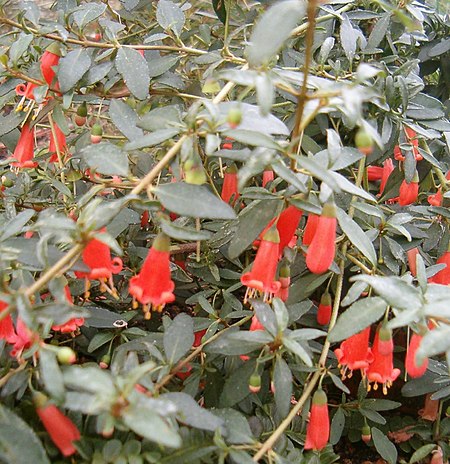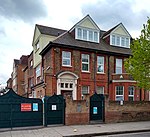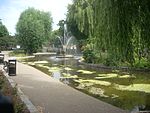Clapton Nursery

The Clapton Nursery also known as Mackay's Clapton Nursery and later Low's Clapton Nursery was a plant nursery established in the early 19th century by John Bain Mackay in Upper Clapton, London, and noted for its introductions of Australian and South American plants into cultivation.The nursery propagated plant material sent by William Baxter from Australia and James Anderson from South America. A garden library was established at the nursery in 1827. In 1831 the foreman and propagator, Hugh Low, took over the nursery. Low was a Scots horticulturalist who commenced work at the nursery after arriving in London in about 1823. His son, Hugh, also became involved with the nursery.The nursery corresponded with Sir William Hooker and supplied the Royal Botanic Gardens, Kew with seed and cuttings.
Excerpt from the Wikipedia article Clapton Nursery (License: CC BY-SA 3.0, Authors, Images).Clapton Nursery
Knightland Road, London Clapton (London Borough of Hackney)
Geographical coordinates (GPS) Address Nearby Places Show on map
Geographical coordinates (GPS)
| Latitude | Longitude |
|---|---|
| N 51.5649 ° | E -0.0583 ° |
Address
Knightland Road
Knightland Road
E5 9HS London, Clapton (London Borough of Hackney)
England, United Kingdom
Open on Google Maps







